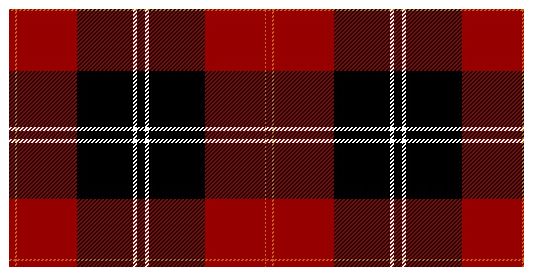 Clan Ramsay:
Clan Ramsay:
 Clan Ramsay:
Clan Ramsay:

The Ramsays are of Anglo-Norman origin. Simon de Ramseie came to
Scotland with David I, who granted him lands in Lothian. From Simon
descended the Ramsay's of Dalhousie.
Clan Ramsay of Dalhousie goes back to at least 1296, when William de Ramsay
first appears. He later fought for Robert the Bruce, and was a
signatory of the declaration of Arbroath in 1320. This letter to the
Pope asserted the independence of Scotland. One of the most famous members
of the family was Alexander Ramsay, William's son, who defended Dunbar
against the English. A dramatized version of his life can be found in
the novel "The Flower of Chivalry" (his nickname) by Nigel Trantor.
The Earldom of Dalhousie was conferred upon the Ramsays by Charles I. In
later years, the Family produced many well-known soldiers, including the
10th Earl, Marquess. In 1849 he became the Governor-General of India.
The current chief of the clan is the Earl of Dalhousie, who lives in
Brechin, Angus. The Ramsay's of Bamff, in Perthshire, are in the line of
a Neis de Ramsay, who lived in the 13th century.
The motto is "Ora et Labora" (Pray and Work).


The tartan is mainly 50% red and 50% black, with two thin white lines running through the black, and two thin blue lines running through the red. Tartan is made by having the same pattern of colored threads in both directions. This means that sometimes black threads cross black threads giving a completely black square, red threads cross red threads giving a completely red square, and black threads cross red threads (and vice versa) giving a blackish-red effect. So for each square of four squares, there is a black square at the top-left, a red square at the bottom right, and black-red squares at the top-right and bottom-left.

Revised: Monday, April 10, 2000